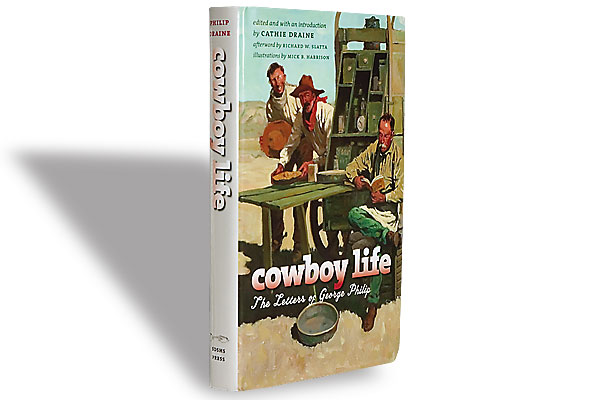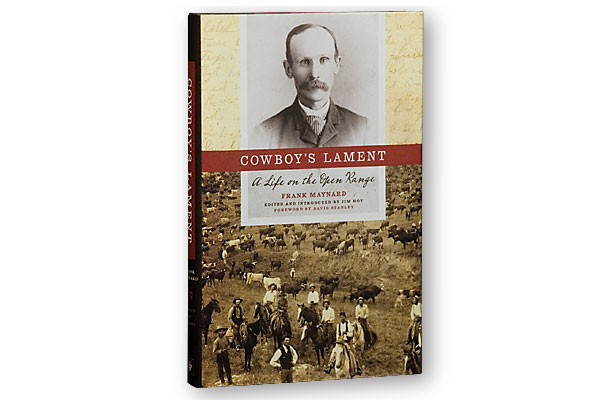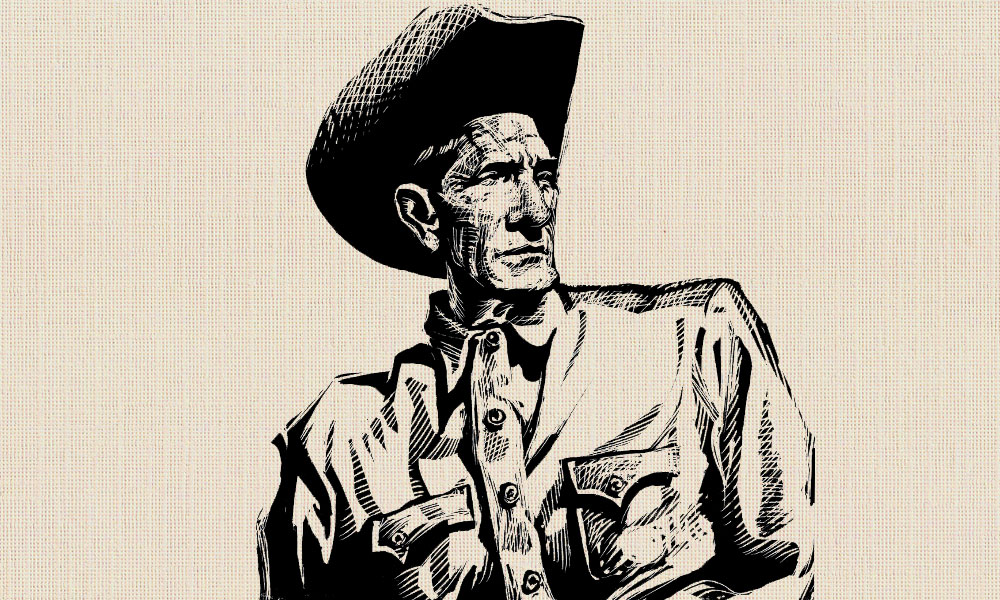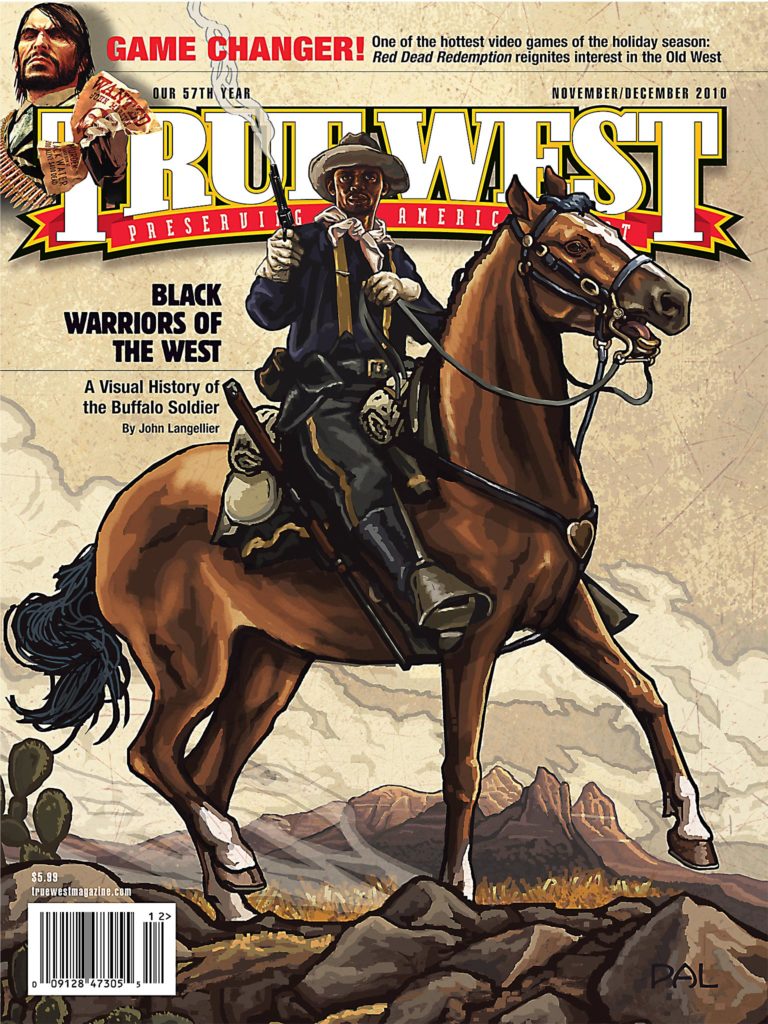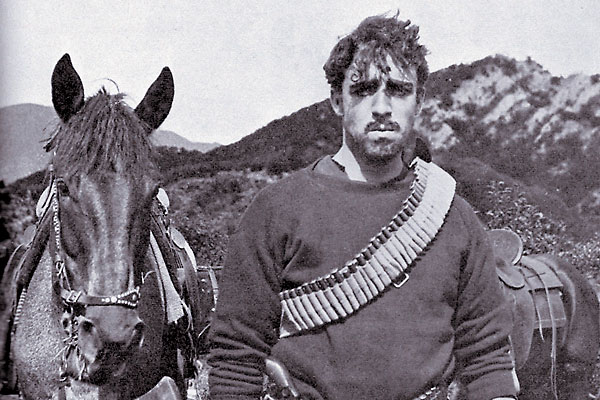
Note to aspiring filmmakers: If you’re looking for a film school, give Raoul Walsh’s curriculum a try. It’s called Life.
Before he was old enough to vote, Walsh had already seen more adventure than most filmmakers do in a lifetime. He was born in New York in 1887 to a Spanish mother and Irish father. In America, Thomas Walsh designed men’s clothing; one of his clients was a sharp-dressing young officer named George Armstrong Custer. Young Raoul grew up surrounded by the rich and famous; houseguests included the tenor Enrico Caruso, showman Buffalo Bill Cody, millionaire glutton Diamond Jim Brady and artist Frederic Remington.
As a teenager Walsh was nearly drowned in a storm sailing his uncle’s yacht from Cuba to Florida. Apparently deciding that the sea was not for him, he spent the next two years of his life riding, roping and trail blazing in Texas and other parts of the old frontier.
He soon learned that “I could ride anything with hair on it,” he recorded in his rollicking 1974 memoirs Each Man in His Own Time. But he found out that “Although I could fork a horse, throw a rope, roll a cigarette with one hand, I knew nothing about trail-driving.”
Schooled by a Texas vaquero named Ramirez, he learned quickly: “Knowledge came the hard way in drifting the herd away from populated centers where local strays might join in and cause trouble; in standing night watch; in learning to sing and talk to the resting herd and to slap my chaps, so the cattle would not spook at the silence in which the howl of a coyote might make them stampede.”
The pay was $30 a month and “found.” “The ‘found’ was beans, sometimes moldy bacon that gave me stomach cramps, and coffee strong enough to melt the spoon. It was a tough life, but I had asked for it. In later years, I would receive a hundred times that much just for telling people how it should be done.” After a few months “I was as brown as an Indian and as hard as nails.”
Returning from the West, Walsh had a fling with stage acting in New York and became an apprentice to the man who would teach him the grammar of film, D.W. Griffith. The veteran director sent him on his greatest adventure, perhaps the most bizarre episode in Hollywood history. In 1914, the Mutual Film Company contracted with the Mexican revolutionary Pancho Villa to make a combination documentary and fictional film on Villa’s life. Mutual actually financed Villa’s battles, for all intents and purposes subsidizing the Mexican Revolution. Walsh codirected and played Villa as a young man; Villa played himself in later scenes. To top it off, Griffith threw in several thousand Confederate uniforms from Birth of a Nation; the clothing once used by rebels in an American movie was worn by Mexican rebels in actual combat while being filmed for another movie.
On January 7, The New York Times reported that “The business of General Villa will be to provide moving picture thrillers in any way that is consistent with his plans to depose and drive Huerta out of Mexico and the business of Mr. Aitken”—Harry E., of the Mutual Film Company—“will be to distribute the resulting films throughout the peaceable sections of Mexico and the United States and Canada.”
Villa’s intention was twofold: first, to get money to finance his revolution and, second, to create a propaganda film that would earn him sympathy throughout the U.S. and Europe. Villa, the contract specified, would receive 20 percent of all box office revenues.
Walsh reported Griffith telling him, “‘You will direct the picture, Mutual will supply a cameraman, and General Villa will be paid $500 in gold each month while the production is going on.’ He did not tell me that Villa had shot a would-be promoter who offered him paper money.”
Walsh’s account is shot through with myth-mongering misinformation. Villa killed no Hollywood promoters; on the contrary, he courted them and got the best deal possible from Griffith.
Walsh may also have been fibbing about Griffith hiring him to direct the picture—or at least the entire picture. Few records from the project survive, but later reports state that Frank Woods “directed”—or at least photographed—the battle scenes, while Walsh’s primary responsibility was filming the highly romanticized fictional scenes depicting the young Villa (he actually shot some of these scenes in the San Fernando Valley, San Bernardino and at the old San Fernando mission). The general was at first apprehensive about having a strapping, young Irish American portray him, but when he saw Walsh’s skill on a horse, he was delighted. All the time Walsh had put in on horseback on the Texas Plains paid off.
The “favorable treatment that Villa received in films and other media in 1914 was of great importance to his standing both in Mexico and in the United States,” reported Villa’s best biographer Friedrich Katz. “By treating him as a national leader long before there was a basis for this, the media facilitated his rise to national and international prominence.”
The goodwill generated by The Life of General Villa dissipated in March 1916, when Villa and part of his army attacked Columbus, New Mexico; a potboiler movie called Villa Dead or Alive was quickly released and pretty much has shaped America’s perception of Villa to this day.
For Walsh’s part, he gained a grudging respect for the most famous of all Mexican revolutionaries. While negotiations for the film were underway at Villa’s headquarters, “I had a chance to inspect the man who held most of northern Mexico in his horny hand…. He was a big man physically: big black mustache, big head, wide shoulders, thick body, and eyes that reminded me of something wild in a cage. He had the scowl and dark coloring of an Indian and to me was the classic example of a Mexican bandit. Listening as he shot questions at Ortega”—Manuel, one of Villa’s lieutenants—“I could understand why his men were said to follow him blindly where ever he led. Here was a man’s man.”
Walsh received little monetary compensation for his efforts. On his way home, when he stopped at a bank in Juarez to change Villa pesos into American money, he figured his share would be worth $40,000. “I had made plans,” he recalled nearly 60 years later. “I would buy a house with a swimming pool, a garage for the Stutz and invite my father and George”—his brother—“to live with me. I was understandably shocked, therefore, when the banker shook his head and said the Villa money was worthless.”
But money couldn’t buy him the legend that working with Pancho Villa added to his reputation. A few years later, when he was still working for Mutual, an assistant informed him that two guys at the gate were asking to see him. “That is how I met Jack London and Wyatt Earp. London was getting on in years, but his seamed face was still as rugged as his stories, which had thrilled me when I was growing up. His books had been published in most countries of the world. The legendary Earp was tall and a little stooped, but I could still see him as the marshal of Tombstone.
“‘So you’re the man who rode with Villa?’ London shook hands and my fingers tingled. ‘How was it?’ London asked. ‘Wyatt and I would like to hear about him.’ After a brief report London glanced at Earp and said, ‘How do you like that? Here we’ve been trying to live up to our reputations and this guys comes out of nowhere and rides with the man who thumbed his nose at President Wilson.’”
Sadly, Walsh’s first film, The Life of General Villa, is lost to history, except for clips of the real Villa leading his troops into battle that survive in a Mexican film vault. The making of the film is depicted in Bruce Beresford’s 2003 HBO movie And Starring Pancho Villa as Himself, with Antonio Banderas as the general and Kyle Chandler of the Friday Night Lights series as Walsh.
Walsh’s acting career ended abruptly in 1929 during the filming of the first outdoor sound feature, In Old Arizona, in which he was playing the Cisco Kid. While Walsh drove through the Utah desert at night, a jackrabbit crashed through the windshield. The shattered glass cost Walsh his right eye, but earned him an eye patch, which made him one of the most recognizable figures in Hollywood.
Surprisingly, Walsh is the most neglected major figure in American movies. He never won an Oscar, and though he lived until 1981, dying at age 94, he was never even recognized by the Academy with a Lifetime Achievement Award. His most famous films are available on DVD but, alone among great American directors, no comprehensive collection of his work exists. Perhaps his versatility has prevented him from being instantly identified with a particular genre, like Ford with Westerns, Hitchcock with Suspense or Sturges with Screwball Comedies.
Though he lived a life more fabulous than any depicted in his films, Walsh has never had a definitive biography (at least in English; two have been published in French). And, scandalously, his 1974 memoirs has been out of print for decades.
Allen Barra is the author of Inventing Wyatt Earp, The Last Coach: A Life of Paul “Bear” Bryant and Yogi Berra: Eternal Yankee. He is a feature writer for The Wall Street Journal and a contributing editor for American Heritage.
A Walsh Sampler:
The Thief of Baghdad (1925): With Douglas Fairbanks. Not so lavish as the 1940 Michael Korda version, but, in the words of film critic Pauline Kael, “slow, dreamy, magically pretty, and enduringly enjoyable.”
What Price Glory (1926): With Victor McLaglen and Edmund Lowe. One of the first great anti-war films, the battle scenes are surreally stark and unforgettable.
The Big Trail (1930): The first wide screen Western feature and the film that gave John Wayne his first starring role was released in a two-disc DVD package that includes a superb 1973 documentary on Walsh by film critic Richard Schickel.
They Drive By Night (1940): With George Raft, Humphrey Bogart, Ida Lupino and Ann Sheridan. Terrific dialogue. Sample: Raft: “Do you believe in love at first sight?” Sheridan: “Yeah, it saves time.”
They Died With Their Boots On (1941): With Errol Flynn and Olivia de Havilland. This life of General Custer is rousing adventure and historical nonsense, though no sillier for its time than Little Big Man during the Vietnam era.
High Sierra (1941): The greatest “modern” Western of all time or one of the greatest gangster films ever made—take your pick. Humphrey Bogart plays the John Dillinger-like figure Roy “Mad Dog” Earl, and Ida Lupino suffers for him. Eight years later Walsh reworked the same plot into a fine Western, The Colorado Territory.
Gentleman Jim (1942): With Errol Flynn and Alexis Smith. If Martin Scorsese’s film bio of Jake LaMotta is too heavy for you, try this, the most fun movie ever made about boxing. (Walsh met “Gentleman Jim” Corbett as a kid.)
Objective Burma (1946): Fierce, tight and a more honest depiction of war than Spielberg or Eastwood could imagine. With Errol Flynn.
Pursued (1947): A neglected Walsh gem, which helped establish Robert Mitchum’s career. Western film historian Jeff Morey calls it the “first Freudian Western. It’s as dark, moody and atmospheric as a film noir.”
White Heat (1949): One of the most aptly-titled gangster movies ever. It closes with James Cagney’s Cody Jarrett, in front of a blazing inferno, screaming, “Top of the world, Ma!” (Homage is paid to this scene by Leonardo DiCaprio in Titanic.)
Band of Angels (1957): Sidney Poitier’s depiction of a former slave-turned-Union Army soldier is one of the first major costarring roles by a black actor in a big budget Hollywood film. For all intents and purposes, the role made Poitier a star.


